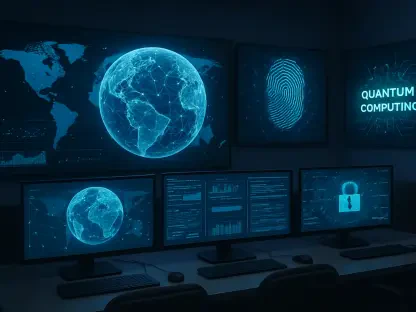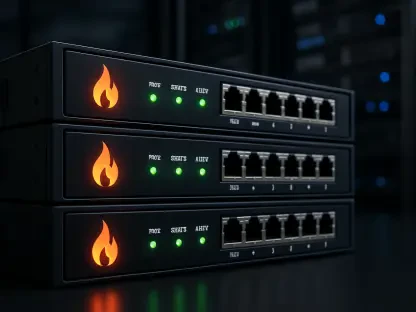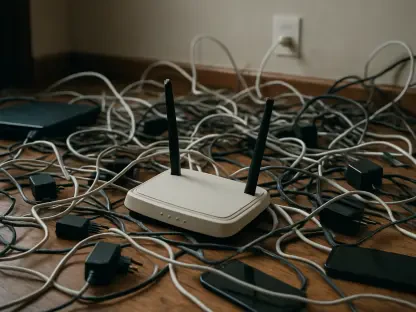In an era where cyber threats continue to evolve at an alarming pace, securing operational technology (OT) environments has become an urgent necessity. These environments are both critical to national infrastructure and potentially vulnerable to attacks, making their security of utmost importance. However, integrating zero trust principles within these aging systems presents unique challenges. Despite the strong incentive to safeguard OT systems, many existing devices rooted in legacy technology are incompatible with modern zero trust requirements. The juxtaposition of advanced security needs and outdated infrastructure forms a critical challenge in implementing robust security protocols without compromising system functionality.
Understanding Zero Trust Architecture
The “Never Trust, Always Verify” Approach
At the heart of zero trust architecture lies the compelling principle “never trust, always verify.” This philosophy dictates that every component within an organization’s network, regardless of its function or location, undergoes constant verification. Each device and user accessing the network must continuously prove its legitimacy to maintain security integrity. This principle sharply contrasts with traditional security models, which often assume trust based on location within a network perimeter. A pivotal example demonstrating zero trust’s necessity was the Colonial Pipeline incident, where a cyber breach through an outdated VPN router underscored the perils of neglecting continuous security updates.
Zero trust aims to prevent such breaches by requiring stringent authentication and real-time validation of users and devices. Enterprises are encouraged to adopt multifactor authentication, network segmentation, and micro-segmentation, thereby materially diminishing the risk of unauthorized access disrupting essential operations. However, these security measures require architectural compatibility often missing in legacy OT systems. Many of these environments are not natively designed to support such rigorous verification requirements, adding complexity to adopting zero trust postures efficiently.
Challenges of Legacy Systems
Legacy OT systems pose formidable challenges in implementing zero trust, primarily due to their inherent design limitations. Devices like transformers and industrial control systems often predate contemporary security advancements, lacking the computational capacity or software support to integrate seamlessly into the zero-trust ecosystem. Consequently, retrofitting these systems involves extensive modernization processes, demanding substantial investments in both time and financial resources. The meticulous nature of such upgrades can stretch over numerous years, necessitating careful planning and prioritization to align effectively with zero trust’s stringent demands.
While modernizing legacy systems remains a daunting endeavor, maintaining outdated security practices poses unacceptable risks in the current cybersecurity landscape. Emerging vulnerabilities and ongoing software updates necessitate a thorough appreciation of possible security deficiencies linked to these older technologies. Thus, organizations must incrementally introduce zero trust capabilities into their OT environments, focusing initially on discrete system areas more amenable to change. This careful balancing of innovation against technological realities reflects the prudence required for successful transition to enhanced security architectures.
Implementing Zero Trust Solutions
Incremental Approach to Zero Trust
Given the vast scope of modernizing OT environments, an incremental approach to zero trust has gained favor. Large-scale transformations often prove financially and logistically prohibitive; consequently, it is more feasible to segment OT systems into smaller, manageable domains. Each domain can then attain a varying degree of zero trust maturity—ranging from basic through intermediate to advanced—according to its capabilities and operational priorities. Focusing efforts on achieving the highest practicable level of zero trust within each segment ensures efficient resource allocation and enhanced overall system security.
Within these segmented environments, enterprises are encouraged to prioritize security at the application and services layers. Techniques such as continuous monitoring and real-time threat detection serve as foundational elements in mature zero trust implementations. Equally, implementing filtering and employing data diodes safeguard critical user layers and sensitive data clusters, effectively minimizing unauthorized data flows. This strategy allows organizations to allocate strategic resources thoughtfully, investing in advanced solutions tailored to their specific operational and security requisites.
Managing Data Flow Between OT and IT
Effective management of data flows between OT and IT domains is central to zero trust success. Given their design, earlier OT systems often lack robust security protocols fundamental to modern zero trust frameworks. Techniques like data diode technology offer a viable pathway by permitting one-way data transfer, thus securely funneling information out of legacy systems without the reciprocal risk of introducing vulnerabilities. While this tactic facilitates data extraction, transposing information from IT systems back into antiquated OT devices poses substantial challenges due to incompatible authentication and security designs.
Many traditional devices were not constructed to handle newer security implementations like multifactor authentication. Consequently, resource management demands delicate balancing to ensure advanced systems process vital data from such devices. By segregating Internet of Things (IoT) devices with focused protection efforts, organizations can prioritize security mechanisms effectively, concentrating chiefly on systems integral to data aggregation and analysis. Allocating resources judiciously thus ensures both operational functionality and robust security improvements.
Strategic Zero Trust Implementation
Establishing Secure Communication Channels
Secure communications between users and machines are essential for zero trust efficacy, demanding explicit attention to establish reliable, continuous connectivity. Transport Layer Security (TLS) certificates serve as a crucial mechanism for ensuring secure data exchanges, underpinning user-machine identity verification within zero trust ecosystems. However, implementing these certificates introduces complexities: the progressively shrinking validity periods necessitate careful scheduling to mitigate disruptions related to expired certifications, maintaining vital network operations without unwelcome outages.
Over the next four years, certificate expiration timelines have condensed significantly—from one year traditionally to just 47 days—necessitating rigorous coordination and resource management. Such reduced periods require dedicated attention to infrastructure readiness, with particular emphasis on automating certificate renewal processes. Failure to manage these elements impacts service continuity profoundly, interrupting critical updates and exacerbating operational costs when service downtimes emerge due to inefficiencies in certificate handling.
Preparing for Potential Zero Trust Setbacks
A comprehensive zero trust adoption strategy must encompass preparedness for potential implementation setbacks, as underscored by numerous recent industry benchmarks. The meticulous application of zero trust principles demands forethought, particularly in scrutinizing staffing strategies for public key infrastructure management. Effective troubleshooting of expired certificates, coupled with necessary process automation, minimizes resilience impacts while fostering operational agility. Overlooking these considerations can expose OT systems to vulnerabilities and impede optimal performance post-implementation.
Analogous to disaster recovery planning, zero trust preparedness fosters system resilience and operational continuity. Strategically analyzing possible failure points and resolving potential challenges proactively creates fortified defenses against the multifaceted threats to cybersecurity landscapes. Navigating the zero trust transition not only elevates defenses but engenders robust operational capability to withstand evolving dangers in an unpredictable digital milieu, ensuring systematic advancement towards a future secured through comprehensive zero trust integration.
The Path Forward
In today’s rapidly changing landscape of cyber threats, securing operational technology (OT) environments is critical. These environments are not only integral to national infrastructure but are susceptible to cyber-attacks, making their security incredibly crucial. Implementing zero trust principles into older systems brings distinct challenges. Although there’s a strong motivation to protect OT systems, many of the devices currently in use are based on outdated legacy technologies. These legacy systems often don’t meet modern zero trust security requirements. This creates a difficult situation where there is a need to establish stringent security protocols while managing the constraints of old technology without disrupting system functionality. The delicate balance of incorporating robust security measures and maintaining efficient operations underscores the urgent need for innovative solutions. As we forge ahead, figuring out how to secure these vital OT systems without hindering their operation is a paramount issue for our cybersecurity experts.









